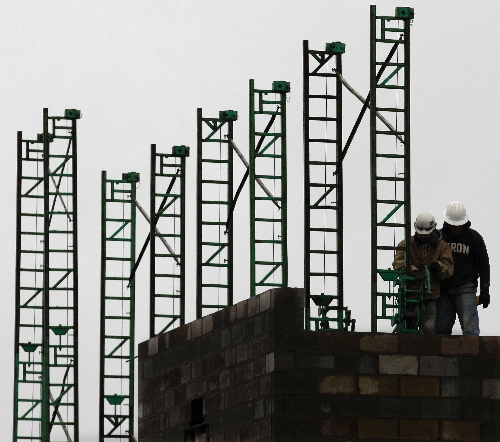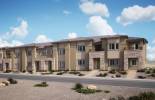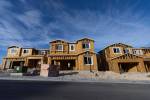Local construction spending still tepid, execs say
WASHINGTON -- Construction spending jumped in November as builders spent more on single-family homes, apartments and remodeling projects.
The Commerce Department said Tuesday that spending on construction projects rose 1.2 percent in November, following a revised 0.2 percent drop in October. The increase was the third in four months and the largest since a 2.2 percent rise in August.
The November increase pushed spending to a seasonally adjusted annual rate of $807.1 billion, still barely half the $1.5 trillion that economists consider healthy. Analysts say it could be four years before construction returns to healthy levels.
For November, strength was seen in housing and government spending. Nonresidential construction fell, reflecting declines in construction of office buildings and shopping centers.
The construction industry was hit hard by the housing bust and has had trouble recovering since the recession ended more than two years ago.
Severe budget problems have squeezed state and local governments while the federal government has come under pressure to get control of soaring budget deficits.
Private builders have also struggled. Although their spending increased, they have scaled back on construction plans and are working from depressed levels.
Jeff Ehret, founder of Penta Building Group in Las Vegas, said what's key to him is not the 1.2 percent increase in November, but that construction spending is still only half of where it should be.
"We're looking for glimmers of optimism anywhere we can find them, but it's hard for us and certainly here in Vegas, I don't see it," Ehret said Tuesday. "There's still so much inventory to be absorbed in housing, retail and commercial.
"The only type of commercial activity I see happening in the next year or so will be specific build-to-suit projects, where an owner can't make any of the available building inventory work for their needs," he said.
As if weak construction demand isn't tough enough, contractors who find work these days must wait longer to get paid, a financial analysis by Raleigh, N.C.-based Sageworks Inc. shows.
Sageworks analyzed accounts receivable days for private companies in construction-related industries, including those tied to early-stage work such as architectural design and foundation work, and those for drywall, flooring and other end-of-project tasks.
Nonresidential building construction took 60.6 days to get paid on average in 2011, compared with 50.8 days in 2006. Residential building construction took 21.1 days to get paid, compared with 13.8 days in 2006.
"Everybody's holding the money longer," said Gary Fortier, management advisory services partner for construction accounting firm Large & Gilbert of Atlanta.
Home construction has begun a gradual rebound and should add to the nation's economic growth in 2011. The chief reason is apartments are being built almost twice as fast as two years ago. Renting is the only option for many people who have lost their jobs, their homes or both.
Builders in November broke ground on homes at a seasonally adjusted annual rate of 685,000. That was a 9.3 percent jump from October and the fastest pace since April 2010.
Builders should start at least 600,000 homes this year. That's up from 587,000 last year and 554,000 in 2009 -- the worst year on record. Still, that's half the number that economists expect in a healthy market.
In Las Vegas, new-home construction is down about 85 percent from where it was five years ago, housing analyst Dennis Smith of Home Builders Research reported. Through November, local home builders had pulled 3,348 permits, compared with 23,200 in 2006. He's projecting a couple of hundred more permits this year.
"Most of the people you talk to here are on board that the national picture will improve before Las Vegas," Smith said. "Permit activity on the national level is going to be up and that coincides with the market going through its cycle. I don't want to make it sound like the housing recession is over, but the good news is it's going in the right direction. I don't think starts will decrease."
Smith said it's "surreal" to think about again reaching 20,000 annual building permits in Las Vegas.
Although construction may be rebounding, home sales remain weak. This year will likely end up as the worst for new-home sales in history.
New homes represent less than one-fifth the housing market, but they have an outsized impact on the economy. Each home built creates an average of three jobs for a year and generates about $90,000 in taxes, the National Association of Home Builders estimates.
Builders are struggling to compete with weak demand because of still-high unemployment and a glut of homes on the market because of foreclosures and short sales -- where lenders accept less for a house than the mortgage on the home is worth. Those homes are selling for at an average discount of 20 percent, which is lowering neighboring home values.
Las Vegas Review-Journal writer Hubble Smith contributed to this report.





























